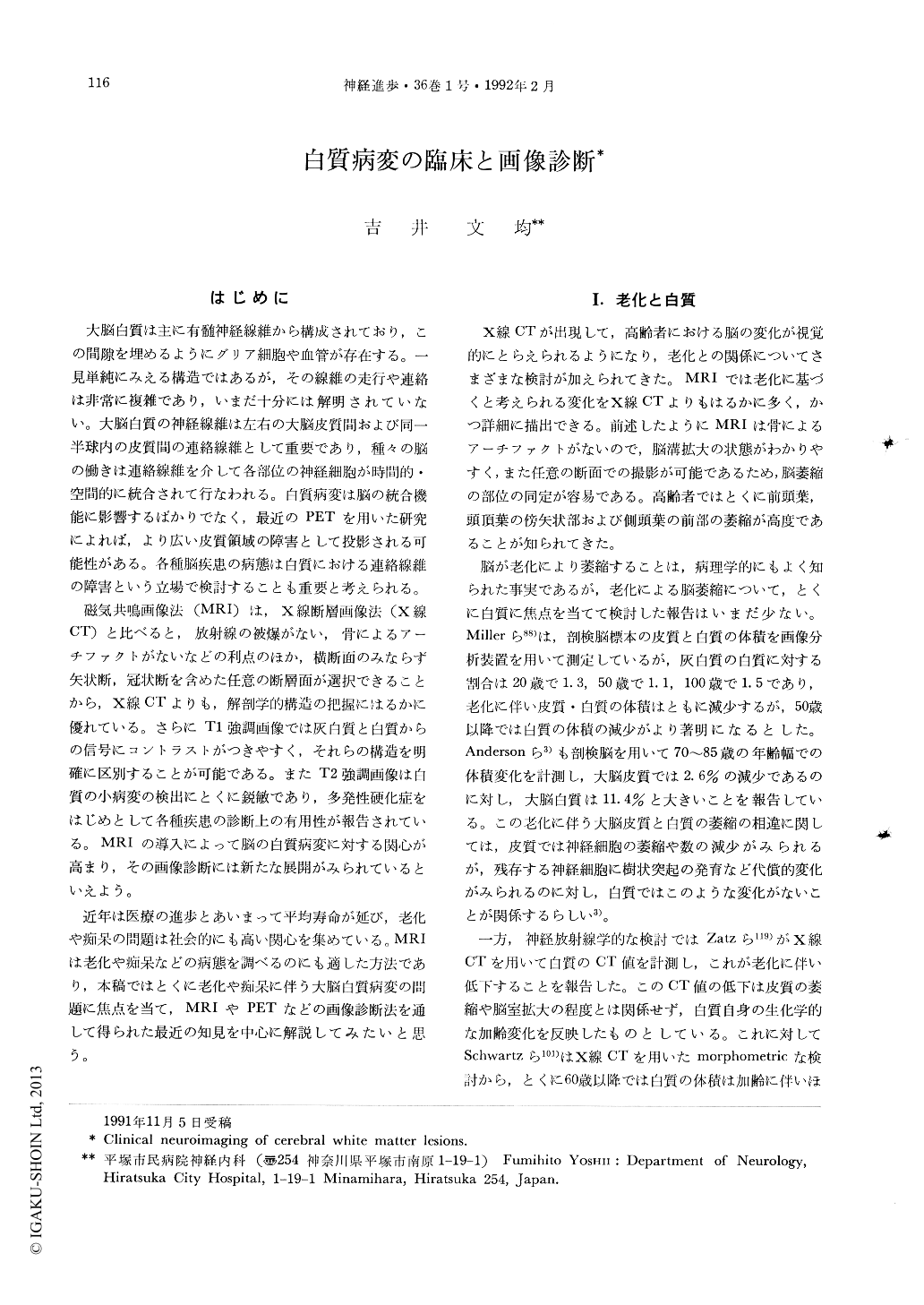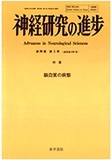Japanese
English
- 有料閲覧
- Abstract 文献概要
- 1ページ目 Look Inside
はじめに
大脳白質は主に有髄神経線維から構成されており,この間隙を埋めるようにグリア細胞や血管が存在する。一見単純にみえる構造ではあるが,その線維の走行や連絡は非常に複雑であり,いまだ十分には解明されていない。大脳白質の神経線維は左右の大脳皮質間および同一半球内の皮質間の連絡線維として重要であり,種々の脳の働きは連絡線維を介して各部位の神経細胞が時間的・空間的に統合されて行なわれる。白質病変は脳の統合機能に影響するばかりでなく,最近のPETを用いた研究によれば,より広い皮質領域の障害として投影される可能性がある。各種脳疾患の病態は白質における連絡線維の障害という立場で検討することも重要と考えられる。
磁気共鳴画像法(MRI)は,X線断層画像法(X線CT)と比べると,放射線の被爆がない,骨によるアーチファクトがないなどの利点のほか,横断面のみならず矢状断,冠状断を含めた任意の断層面が選択できることから,X線CTよりも,解剖学的構造の把握にはるかに優れている。さらにT1強調画像では灰白質と白質からの信号にコントラストがつきやすく,それらの構造を明確に区別することが可能である。またT2強調画像は白質の小病変の検出にとくに鋭敏であり,多発性硬化症をはじめとして各種疾患の診断上の有用性が報告されている。
The white matter bundle has an important role in the connectivity of the brain, and damage to the white matter is reported to disrupt various cerebral functions. Magnetic resonance imaging (MRI) has many advantages over computed tomographic scans for visualization of brain anatomy and has been widely used in the study of white matter lesions. The signals from the white matter and grey matter are clearly discriminated on T1-weighted images, making it possible to delineate the morphology of the white matter, while T2-weighted images allow sensitive detection of small lesions in the white matter.

Copyright © 1992, Igaku-Shoin Ltd. All rights reserved.


